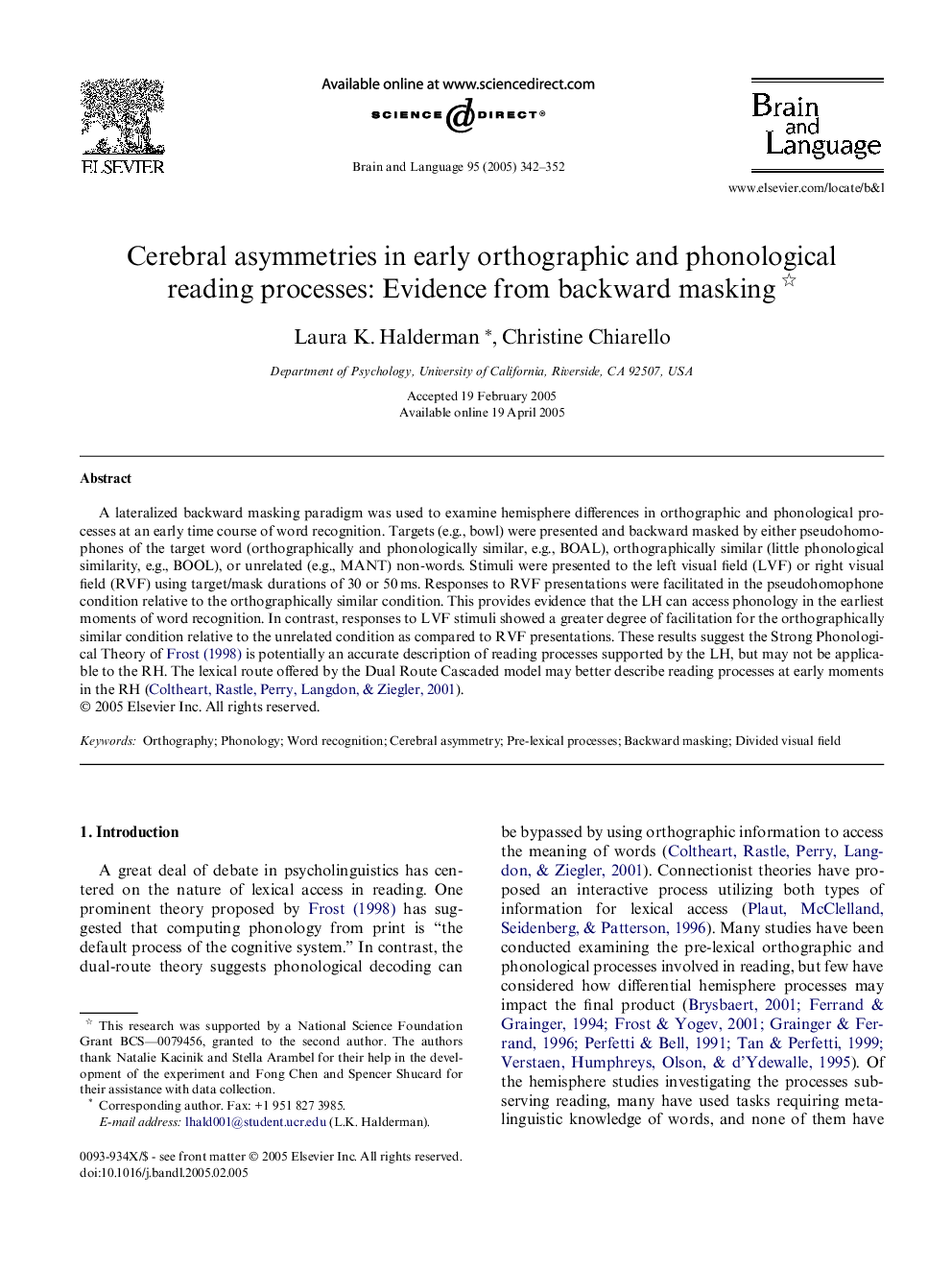| Article ID | Journal | Published Year | Pages | File Type |
|---|---|---|---|---|
| 10456834 | Brain and Language | 2005 | 11 Pages |
Abstract
A lateralized backward masking paradigm was used to examine hemisphere differences in orthographic and phonological processes at an early time course of word recognition. Targets (e.g., bowl) were presented and backward masked by either pseudohomophones of the target word (orthographically and phonologically similar, e.g., BOAL), orthographically similar (little phonological similarity, e.g., BOOL), or unrelated (e.g., MANT) non-words. Stimuli were presented to the left visual field (LVF) or right visual field (RVF) using target/mask durations of 30 or 50Â ms. Responses to RVF presentations were facilitated in the pseudohomophone condition relative to the orthographically similar condition. This provides evidence that the LH can access phonology in the earliest moments of word recognition. In contrast, responses to LVF stimuli showed a greater degree of facilitation for the orthographically similar condition relative to the unrelated condition as compared to RVF presentations. These results suggest the Strong Phonological Theory of Frost (1998) is potentially an accurate description of reading processes supported by the LH, but may not be applicable to the RH. The lexical route offered by the Dual Route Cascaded model may better describe reading processes at early moments in the RH (Coltheart, Rastle, Perry, Langdon, & Ziegler, 2001).
Related Topics
Life Sciences
Neuroscience
Biological Psychiatry
Authors
Laura K. Halderman, Christine Chiarello,
